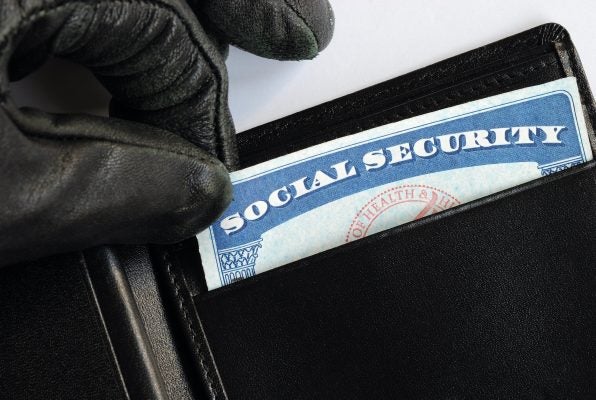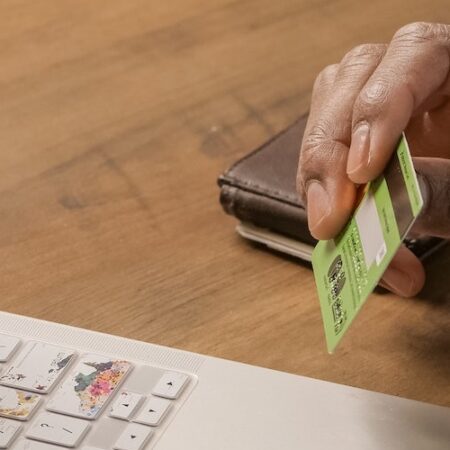
You’ve probably heard the terms “identity theft” and “identity fraud” used interchangeably. The United States Department of Justice website even clearly states that “identity theft and identity fraud are terms used to refer to all types of crime in which someone wrongfully obtains and uses another person’s personal data in some way that involves fraud or deception, typically for economic gain.”
So, is there an actual difference between identity theft and identity fraud?
Although identity theft and identity fraud are often tied to the same meaning, there are a few instances when they are used as slightly different terms. For instance, when you look online, you may have noticed that one website predominantly uses the term identity theft while another uses identity fraud. Below, we will discuss what you need to know about identity theft and identity fraud.
Identity Theft

In many cases identity theft, refers to the act of stealing a person’s identity and information.
Here’s a brief breakdown of some of the most common types of identity theft:
- Synthetic Identity Theft —The creation of a completely new identity based on information stolen from various other real identities.
- Medical Identity Theft —Involves the stealing of a person’s identity for illegal medical purposes.
- Criminal Identity Theft —Taking a person’s identity to avoid criminal consequences.
- Child Identity Theft —Occurs when someone steals the identity of a child – the identity thief is typically a person the victim knows like a family member or close family friend.
- Tax Identity Theft —Involves the stealing of a person’s sensitive tax information and data
The identity theft types listed above are not all of the types that can occur. Unfortunately, identity theft is a spreading threat and affects millions of people each year. It’s important that you make sure you know some forms of identity fraud that can follow the types of identity theft mentioned above.
Identity Fraud

Identity fraud can sometimes be used to describe the act of using stolen identities for personal gain.
As mentioned previously, there are several types of identity theft. With every type of identity theft, several forms of identity fraud follow. Here are a few forms of identity fraud that follow identity theft:
- Synthetic Identity Fraud —Using a real form of stolen identification, like a social security card, that is paired with an entirely synthetic persona/identity to open credit accounts and to perform other financial gain-related acts.
- Medical Identity Theft —Using a form of stolen identification like a name, birth certificate, and social security number to obtain things like medical care, prescriptions, health insurance, medication, etc.
- Criminal Identity Theft —Using a stolen identity to avoid consequences for criminal acts, like putting a speeding ticket onto someone else’s record by using a stolen/forged driver’s license.
- Child Identity Theft —Using a child’s information, like a social security number, for financial gain, e.g. the creation of a credit file.
- Tax Identity Theft —Using a person’s W-2 form and/or sensitive personal tax information to obtain tax refunds and benefits.
To avoid identity fraud, you need to first do what you can to avoid identity theft as identity fraud is directly tied to the actual theft.
Identity Theft and Fraud Prevention

These five steps will improve your chances of preventing multiple types of identity theft and identity fraud:
- Keep all important documents and information in a secure place. If you have multiple paper documents that contain sensitive personal information, you should make sure these documents are in a secure place like a home safe. If these documents are outdated, you should try to dispose of them by shredding them if possible. After all, even outdated documents have important information on them. Some important documents you should keep safe include your social security card, birth certificate, tax forms, and passport.
- Change your online passwords on a regular basis. Like most people, you probably have a few passwords you use on rotation. If you know that you are using the same password for multiple online accounts, you should change those as soon as possible. Additionally, you should also make it a goal to change up your passwords at least every year or so. If you are struggling with password memorization, there are some reliable password managers out there you can use, like LastPass.
- Keep track of who you share your information with. Sharing information is obviously something you should control; however, many people fail to realize just how often they share their information and with whom they share it. For instance, certain businesses and organizations may ask you to share your social security number. In many instances, you don’t necessarily have to provide them with this information. You should try to limit who you share certain information with and keep track of the people/organizations that you do share information with.
- Avoid using public Wi-Fi networks. Using public Wi-Fi networks can put your personal devices, and yourself, at risk. Public Wi-Fi networks generally don’t have any strong security structure and yet almost everyone uses them to send private emails, text messages, log into bank accounts, and more. It’s best in general if you simply stay away from frequent public Wi-Fi use.
- Educate yourself and up-to-date on identity theft and fraud trends. Identity theft, identity fraud, and cybercrime has been advancing over time. Recent data breaches like the Equifax breach are examples of this. In order for you to avoid identity theft, fraud, and cybercrime, you need to know what you should be avoiding. You should do what you can to educate yourself on the latest identity theft and fraud crimes, scams, cybercrime trends, and more. In addition, you should make sure you family is educated as well.
The five steps listed above are only a few things you can do to better your chances at preventing identity theft and identity fraud. It’s important that you take the time to learn about other steps you can take and what you should do if you or a loved one does become a victim of identity theft and fraud.
The Bottom Line
Although identity theft and identity fraud are often used interchangeably, it’s important to know that both terms have some differences. A good rule of thumb is to keep in mind that identity theft may refer to the act of stealing an identity while identity fraud can refer to the act of using a stolen identity.
If your credit has been damaged by identity theft or identity fraud, there is still hope. CreditRepair.com can help you remove the negative items on your report and get your credit back on track.
Carry on the conversation on our social media platforms. Like and follow us on Facebook and leave us a tweet on Twitter.Guest Article from Best Company.






